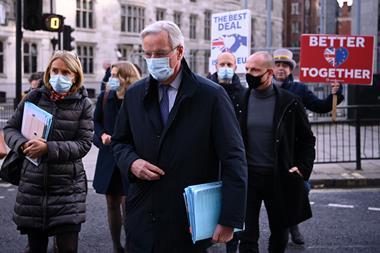The EU’s Reach chemicals regulations offers health benefits that are four times greater than the costs, according to new analysis by the European Chemicals Agency (Echa). The monetised health benefits of Reach from restricting the manufacture and use of chemicals that pose a risk to EU citizens amount to €2.1 billion (£1.83 billion) annually, while the associated costs to society add up to €500 million per year, Echa estimates. Meanwhile, the combined costs of all restrictions that Reach proposed between 2010 and 2020 amounted to €1.7 billion per year, the agency calculates.
In addition, Echa points out in its report that Reach provides significant savings by mitigating environmental risks. The regulation is estimated to prevent the release of more than 95,000 tonnes of hazardous substances into the environment each year.
For example, the rule’s proposed restriction on intentionally added microplastics will block the release of approximately 500,000 tonnes of such materials into the environment over the next two decades, Echa said.
The costs of Reach restrictions related to reducing the 95,000 tonnes of emissions are estimated at around €1.2 billion a year, Echa says. Most of these expenses would be incurred by companies that need to replace their restricted chemicals with safer ones or alternative technologies, the agency explains.
‘Reach restrictions are a powerful and effective way to control the risks of chemicals at EU level and drive substitution,’ said Peter van der Zandt, Echa’s director for risk management. ‘This study shows that societal benefits of restrictions are considerably higher than the associated costs.’
But some experts in the field are sceptical. ‘Echa as a European agency of the European commission will always submit assertions that justify the EU Reach regulation on which its existence primarily relies,’ says Peter Newport, chief executive of the UK’s Chemical Business Association (CBA), which represents chemical distributors, traders and smaller manufacturers. ‘CBA has no empirical data to challenge the assertions of Echa,’ he adds. ‘Selective quoting of data may not fully reveal the underlying realities.’
Newport argues that comparing today’s benefits to today’s costs fails to account for the historical costs of Reach compliance, the budget cost of which was spent before the second registration deadline of 2013, let alone the final cost by the last deadline of 2018.
Simon Tilling, a partner and specialist in chemicals regulation at UK law firm Burges Salmon, says it is always challenging to put a precise figure on societal benefits, but ‘it is no doubt correct that the regulation of chemicals will provide benefits to health and the environment, with financial consequences to society as a whole’. However, he suggests that this masks the separate but important question of whether these benefits could have been achieved through a different regulatory approach.
‘It is beyond dispute that implementing the EU Reach regulation has been an enormously expensive exercise, requiring the generation and purchase of data on huge numbers of existing chemicals on the market,’ Tilling continues. ‘Might a more targeted approach have achieved the same benefits but at less cost?’
This is an important question given that the UK is now tasked with replicating Reach after Brexit, and industry has put the costs of doing so at around £1 billion, Tilling says. ‘Only last week, a collection of UK industry bodies asked UK government for a lighter touch, and less costly, approach, which targets those chemicals that are of most concern rather than building a database of all chemicals,’ he notes.
Whether there is appetite in the UK to move to a different approach for chemicals management, or whether the Echa report persuades UK government to mirror Reach, remains to be seen, according to Tilling.

















No comments yet